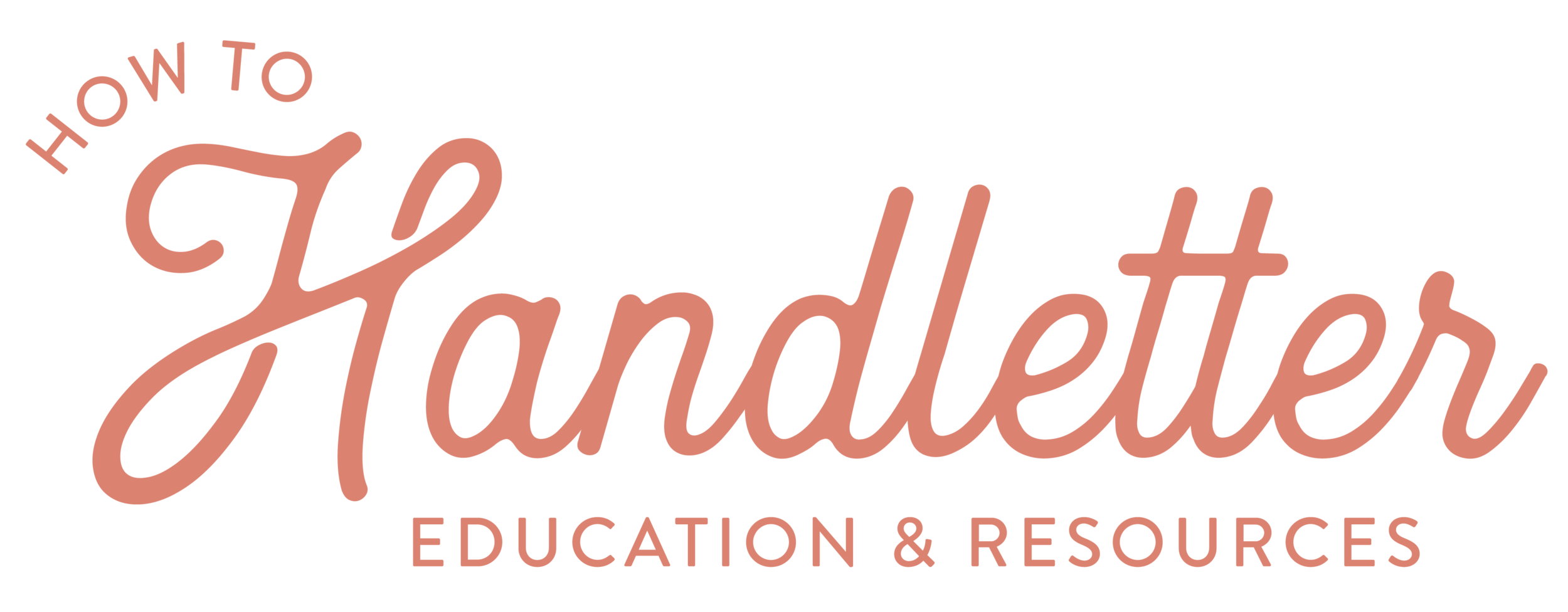Bouncy Lettering Tutorial For Beginners
Creating bouncy lettering can be a fun way to add dimension and character to your handlettering and modern calligraphy. This beginner-friendly tutorial breaks down steps to help you develop your own bouncy lettering style in a simple way.
FIRST OF ALL, LET’S DEFINE WHAT BOUNCY LETTERING IS
While I’m a firm believer that there are no hard & fast rules when it comes to hand lettering, there is a style of lettering that allows and encourages more creative freedom than is typical. This is when we allow the bottoms and tops of our letters to float, or bounce, across the page. And this is what you will hear many refer to as bouncy lettering, bounce lettering or bounce calligraphy!
And while bouncy lettering may look like a free-for-all, it does actually take some practice and technique. Without that, your lettering may end up looking messy or chaotic. So let’s get into some of the steps that can help us to create a beautiful bouncy lettering style! And don’t miss the tutorial video below where I show examples of some bouncy lettering!
Step 1: Master Even Lettering
The first step to creating bouncy lettering may seem counterintuitive. However, developing an evenly spaced lettering style is very important. Without this step, it can be difficult to methodically drop certain parts of your letters. In turn, this can result in a look that is difficult to read or lacking balance. But if you first have a good grasp on even lettering, the bouncing may come more naturally. If you don’t feel comfortable with this step, I recommend my Simplified Lettering Beginner Bundle to help you get started!
Step 2: Drop your descenders
Once you’re able to visualize an even lettering style, start with a few letters that allow you to bring your descenders down. Some good letters to test this out on are a, b & d. Simply take the last downstroke of your letter and instead of resting it on the baseline, drop it a bit below. You can do this evenly, where all of your descenders are dropped to the same spot. Another option is to vary them for a looser lettering look. You don’t even have to do it for every letter. Try mixing it up a bit. A good way to do this is to take 1 word and try to recreate it 3+ different ways. This is one of my favorite ways to discover my lettering style. It helps me not only to see what works, but to see what doesn’t work!
Step 3: Exaggerate your upstrokes.
On the opposite side of your letters, there are upstrokes that may line up evenly in the middle of your grid. Similar to step 2, you can exaggerate these strokes to go up higher than you normal would. This will allow for some variation on the tops of your letters. In my opinion, this step is more difficult than dropping your descenders. The reason for this is that not every upstroke can be exaggerated. For example, there’s not a lot of variety that you can add to a lower case ‘I’. But keep experimenting. If something doesn’t feel right, that’s ok! Your handlettering style will likely evolve over time and this is one way to make that happen.
Step 4: Extend the tail of your letters.
Step 4 can help make sure that our letters don’t get too out of control and crowded together. By extending the tails of our letters, we can bounce each letter up or down. This can give you a little more space to work with while also adding some more stylistic elements to your hand lettering or modern calligraphy. Make sure to watch my Bouncy Lettering Tutorial video below for more examples of this step.
Step 5: Practice, experiment & have fun!
This is an important part of any handlettering tutorial: practice, experiment & have fun! Handlettering is an art form that allows you to express your unique ideas and creativity, so don’t be afraid to try something new! And don’t be afraid if it doesn’t look perfect immediately. Practice makes progress!
If you’re interested in going further with Bouncy Lettering, I have created a step-by-step printable that includes printable practice worksheets & a detailed look at my bouncy lettering process. It covers multiple different bouncy lettering styles, from a bright and bouncy style to a more romantic and whimsical style.
I have created a video (see below) where I flip through the entire workbook so that you can see exactly what is inside! You can find the download here & the video that shows you exactly what’s inside by clicking here!

